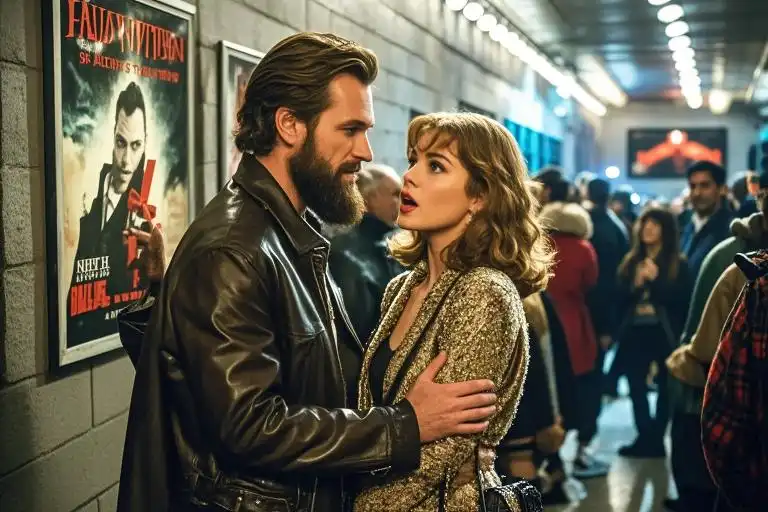Steven S. DeKnight once ambushed me with a bear hug so abrupt, I nearly dropped my notebook.
It happened seconds before he vanished into a sweltering screening room for his documentary premiere. The reason? He’d overheard me mention a certain producer we’d both…well, let’s call it “shared creative differences” with. Without a word, this towering showrunner — the mind behind Spartacus and Daredevil — decided I needed an impromptu therapy session disguised as an embrace.
Turns out, he wasn’t wrong.
From Fangirl to Professional: A 20-Year Crush on Storytelling
Our reunion began with trauma bonding.
When I wrote about my Dracula TV series nightmare — think 18-hour shoots and coffee that tasted like motor oil — Steven slid into my DMs like a vampire hunter spotting prey. “Zoom tomorrow?” his message read. “I’ll bring the war stories.”
But let’s rewind.
Long before showrunners Instagrammed their avocado toast, I’d obsessed over Steven’s work. His Buffy the Vampire Slayer episodes (“Lies My Parents Told Me,” anyone?) taught me that monsters could be metaphors, and that a well-placed quip could cut deeper than a stake. By the time he reinvented TV combat with Spartacus, I’d graduated from dorm-room binge-watcher to entertainment journalist. Yet there I was, palms sweating, staring at his Zoom thumbnail like it held the secrets of the Watchers’ Council.
Hollywood’s Worst-Kept Secret: Everyone’s Faking It
Our call started with the usual industry gripes:
- Network notes that turn Shakespeare into soap operas
- The “please make this R-rated but also Disney-friendly” paradox
- Craft services burritos that double as paperweights
But then Steven dropped this gem: “Writing for TV is like assembling IKEA furniture blindfolded. You’re never sure if it’ll be a shelf or a death trap.”
We laughed, but the truth stung. Hollywood’s glittering façade often hides creative burnout — something Steven channeled into Jupiter’s Legacy, where superheroes literally crumble under legacy expectations.
The Buffy Effect: Why 90s TV Still Bites
Let’s dissect why Steven’s early work still thrills fans:
| Buffy Innovation | Modern Impact |
|---|---|
| Monster-as-metaphor storytelling | Paved way for Stranger Things’ Demogorgon=teen angst |
| LGBTQ+ representation (Willow & Tara) | Inspired Heartstopper’s gentle approach |
| Musical episodes (Once More With Feeling) | The Bear’s experimental “Fishes” episode owes it royalties |
Steven’s secret sauce? Treating genre as a Trojan horse for human drama. His Angel episode “Spin the Bottle” mixed amnesia tropes with existential dread — basically, Eternal Sunshine of the Spotless Mind with fangs.
When Showrunners Cry: The Scene That Broke Us
Mid-Zoom, our small talk collapsed like a failed third act.
“You ever cry in the writers’ room?” I asked, expecting machismo.
Steven paused. “Every damn season.”
He described cutting a Spartacus scene where a slave whispers his daughter’s name before dying. “The studio said it was ‘too quiet.’ I fought like hell. That whisper was the battle cry.”
It hit me: Hollywood’s real wars aren’t fought at premieres, but in edit bays at 3 AM.
The Unwritten Rule of Creative Survival
As our call ended, Steven shared advice that’s since become my North Star:
“Want longevity in this business? Fall in love with the problem, not the spotlight.”
He’s living proof. From Buffy’s graveyard stakes to Netflix’s algorithm wars, Steven’s thrived by embracing chaos — much like that documentary screening hug.
So here’s to Hollywood’s quiet warriors: the ones who arm-wrestle studios by day and binge-write by night. And if you’re lucky, they might just rescue you with a perfectly timed embrace.
Final Thought:
Next time you stream Daredevil’s hallway fight scene, remember — true artistry isn’t in the choreography, but in the creators who battle to keep it uncut.

